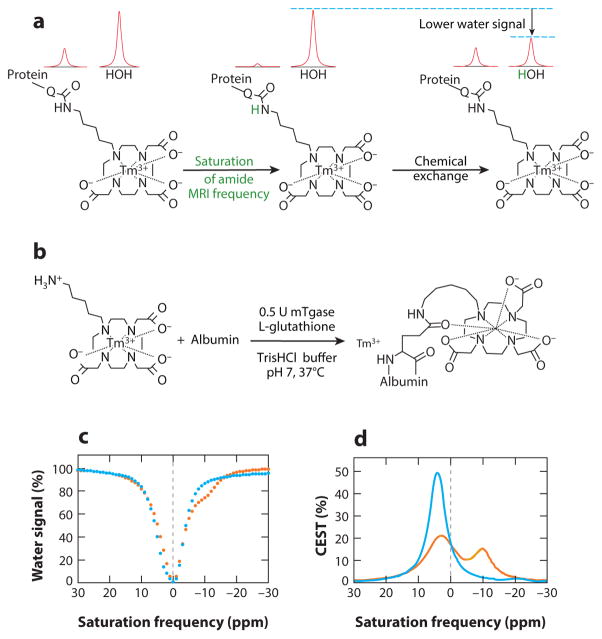Figure 5.
Detection of enzyme activity with chemical exchange saturation transfer magnetic resonance imaging (CEST MRI). (a) The amide proton of the agent undergoes MR saturation (green) and is then transferred to water via chemical exchange, resulting in saturation of part of the water MR signal. (b) Transglutaminase can conjugate the agent to the glutamine side chain of a protein, which can generate a CEST signal. (c) CEST spectra and (d ) a Lorentzian line-shape spectrum before (orange) and after (blue) TGase is incubated with the contrast agent. The appearance of a CEST effect at −9.2 ppm and the disappearance of CEST at +4.6 ppm indicate TGase catalysis of the bond formation. Reproduced with permission from Reference 66.

